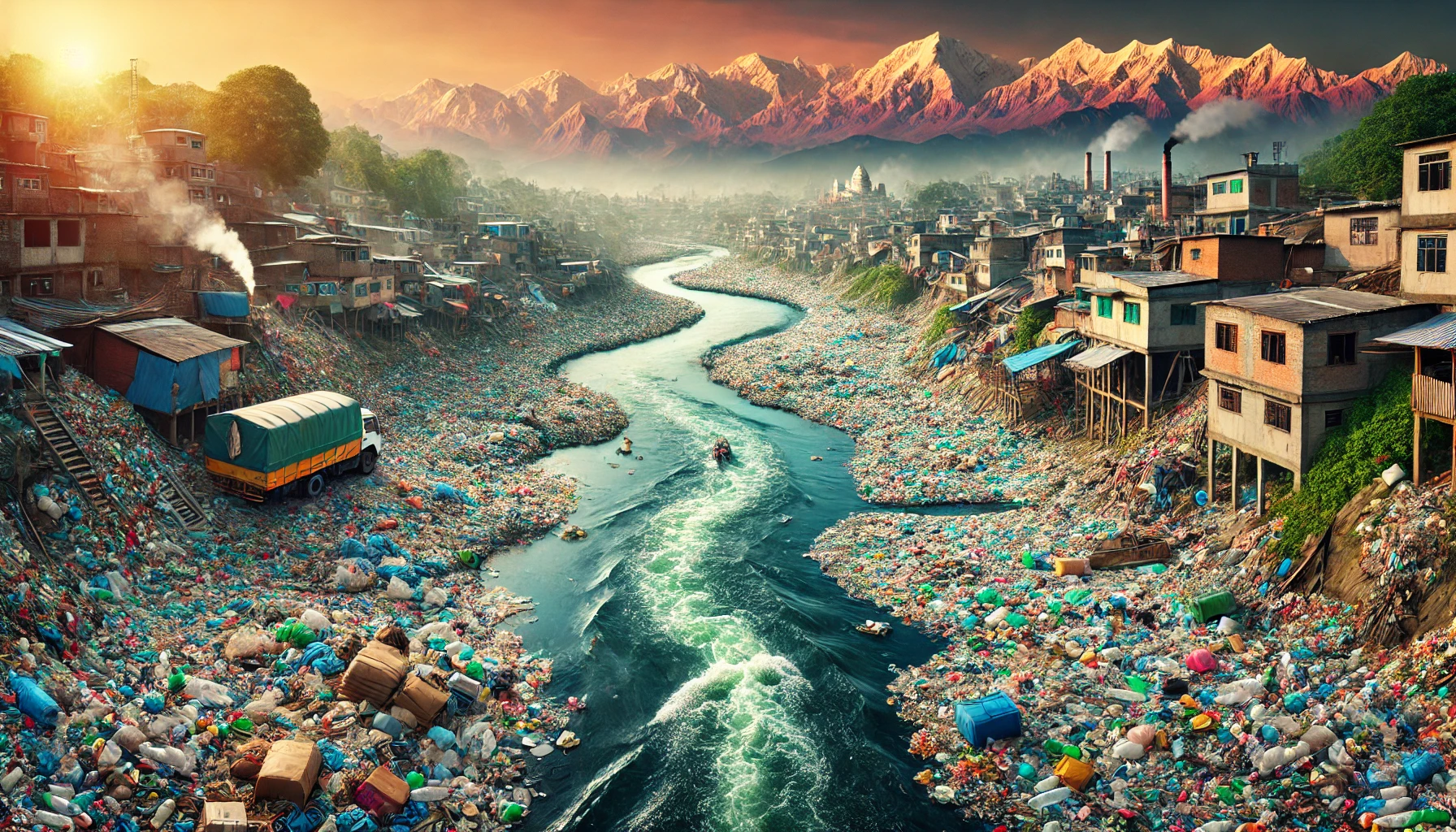Building a Circular Economy: Addressing South Asia's Plastic Pollution Challenge
The World Bank's report highlights the severe environmental threat of plastic pollution in South Asia, driven by inadequate waste management and the region's interconnected river systems. The report calls for regional cooperation and a transition to a circular plastic economy to mitigate these impacts.

The World Bank’s recent study on marine plastic pollution in South Asia underscores the escalating environmental threat posed by inadequate waste management practices across the region. South Asia, home to over 1.92 billion people, is a region of vast cultural and linguistic diversity, yet it faces shared socio-economic challenges, particularly in managing the rapidly growing issue of plastic waste. The region's countries, which are predominantly classified as lower middle-income, are grappling with the dual pressures of rising populations and environmental degradation. Among the most pressing issues is the pollution of water resources by plastic waste, especially given the region’s interconnected river systems that not only supply vital resources but also serve as conduits for pollution. These rivers, which traverse multiple national borders, carry with them significant amounts of solid waste, including plastics, which eventually leak into the seas and oceans, exacerbating the global marine pollution crisis.
Plastic Waste: A Growing Regional Challenge
Plastic waste, particularly single-use plastics, has emerged as a significant environmental challenge in South Asia, where rapid industrial growth and high population densities have transformed many urban areas into hotspots of plastic waste generation. The report identifies that these densely populated regions, particularly those near rivers and coastal areas, are the primary sources of plastic leakage into the marine environment. This pollution is not confined to local boundaries; it is a transboundary issue that affects the entire region. The interconnected river systems of South Asia, fed by the Himalayan glaciers and monsoon rains, play a crucial role in transporting plastic waste from inland areas to the oceans, turning local waste management problems into regional and even global environmental challenges.
The Dominance of Plastic Packaging
In South Asia, plastic packaging constitutes the largest portion of plastic consumption, accounting for over 62% of the total. However, the management of this waste is hindered by several factors, including insufficient infrastructure, inadequate funding, and a lack of formal recycling systems. The report highlights that while plastic consumption per capita in South Asia is relatively low compared to more industrialized regions, the region's growing population and increasing industrial activities are driving a steady rise in plastic use, which, in turn, is leading to an increase in plastic waste. This waste is often mismanaged, with significant portions either being openly dumped, burned, or left uncollected, contributing to widespread environmental degradation.
The Crucial Role of the Informal Sector
The informal sector plays a pivotal role in the region’s waste management landscape. Comprising waste pickers, small-scale recyclers, and local waste collectors, this sector operates in a decentralized and largely unregulated manner. Despite the lack of formal recognition and support, the informal sector is responsible for a substantial portion of the plastic waste collection and recycling activities in South Asia, particularly in areas where formal waste management infrastructure is either lacking or insufficient. The report underscores the critical importance of integrating this informal sector into the broader waste management strategies to enhance efficiency and effectiveness in addressing the plastic waste challenge.
Differences in National Plastic Production and Consumption
The report also highlights significant differences in plastic production and consumption patterns among South Asian countries. India and Pakistan are the only countries in the region with domestic production capacities for plastics in their primary forms, while the other nations rely heavily on imports to meet their plastic needs. India, in particular, is the largest consumer of plastics in the region, accounting for over 81% of the total plastic consumption in South Asia. The Maldives, although having a much smaller population, has the highest per capita plastic consumption, largely due to its thriving tourism industry, which generates substantial amounts of plastic waste.
Towards a Circular Plastic Economy
Despite the presence of policies aimed at reducing plastic waste and managing its impacts, the report points out that the effectiveness of these policies is limited by poor implementation and enforcement. The lack of coordinated regional efforts further exacerbates the problem, as countries in South Asia often operate in silos, addressing plastic pollution as a national issue rather than a regional one. The report calls for a more integrated approach, advocating for regional cooperation through organizations like the South Asia Co-operative Environment Programme (SACEP) to develop and implement cohesive strategies for plastic waste management.
A transition to a circular plastic economy is presented as a viable solution to the plastic pollution crisis in South Asia. This approach emphasizes the importance of reducing plastic production, improving recycling and waste management infrastructure, and encouraging the use of alternatives to single-use plastics. By adopting circular economy principles, the region can not only mitigate the environmental impacts of plastic pollution but also unlock economic opportunities, improve public health, and enhance the overall quality of life for its people. The report concludes by stressing the urgency of collective action and the need for robust policies, investments, and regional cooperation to effectively address the plastic pollution challenge and safeguard the environmental and economic future of South Asia.
- FIRST PUBLISHED IN:
- Devdiscourse
ALSO READ
Suhas Subramanyam Makes History as First South Asian Congressman from Virginia
Maharashtra Cracks Down on Single-Use Plastics in Mumbai
India's Economic Surge: A Beacon for South Asia
Rising Tensions: China's Mega Dam Plans Stir Concerns in South Asia
Empowering Women Entrepreneurs: The Unlock Her Future Prize Expands to South Asia










